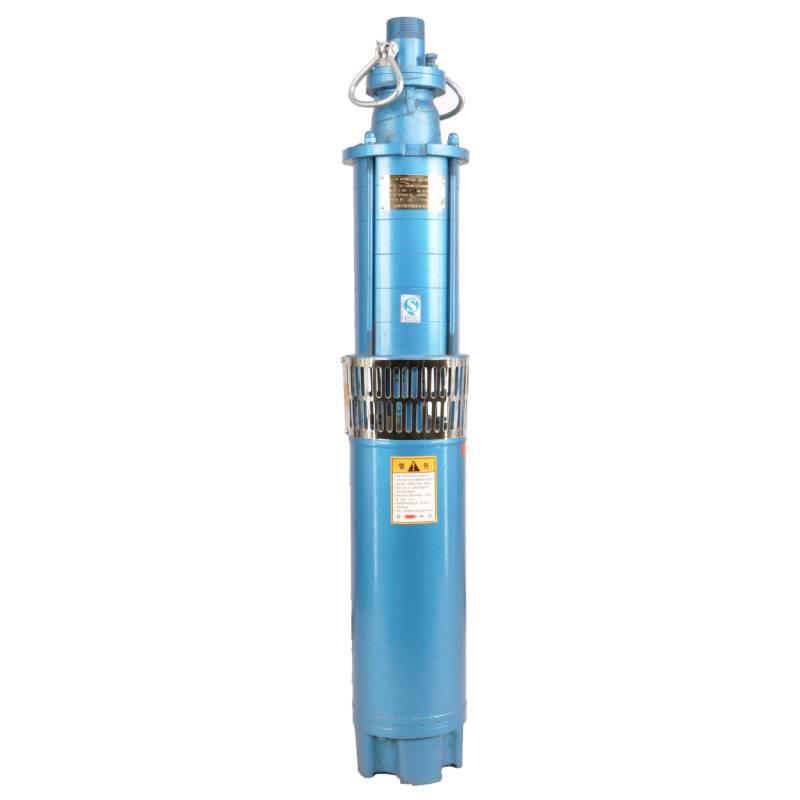Aug . 08, 2024 03:55 Back to list
Exploring the Efficiency and Applications of Deep Bore Submersible Pump Systems in Modern Industries
Deep Bore Submersible Pumps An Overview
Deep bore submersible pumps are essential devices widely utilized in various applications, ranging from agricultural irrigation to municipal water supply systems. These pumps are designed to operate underwater, often at significant depths, making them particularly effective in accessing groundwater resources that are otherwise difficult to reach. As groundwater levels fluctuate in response to climatic conditions, the importance of reliable deep bore submersible pumps has never been more pronounced.
The primary function of a submersible pump is to lift water from deep underground aquifers to the surface. Unlike traditional pumps which are positioned above ground, submersible pumps are installed directly into the well bore, submerged in the water. This design eliminates the need for a suction line and reduces the risk of cavitation, allowing for a more efficient and reliable water extraction process. These pumps are typically constructed from durable materials such as stainless steel or corrosion-resistant alloys, which are necessary to withstand the harsh conditions found at significant depths.
One of the critical components of a deep bore submersible pump is the motor, which is typically hermetically sealed to prevent water ingress. The motor is usually situated at the bottom of the pump, allowing it to remain submerged and cool while it operates. This configuration not only improves the pump's efficiency but also contributes to its long service life. In many models, the motor is coupled directly to the pump impeller, enabling the transfer of energy with minimal losses.
deep bore submersible pumps

Deep bore submersible pumps come in various sizes and power ratings, making them suitable for different applications. From supplying water for agricultural crops to providing municipal water services, these pumps play a crucial role in managing water resources. In agriculture, they are invaluable for irrigation, helping farmers maximize their crop yields, especially in arid regions where surface water is scarce. In urban areas, municipalities rely on these pumps to maintain adequate water supplies for their residents.
Another important advantage of deep bore submersible pumps is their efficiency. Many modern submersible pumps are designed using advanced technologies that optimize performance while minimizing energy consumption. Variable frequency drives (VFDs) are often integrated into the system, allowing for precise control of pump speed and flow rates. This adaptability can significantly reduce operational costs, making deep bore submersible pumps an economical choice over time.
However, the installation and maintenance of deep bore submersible pumps require specialized knowledge and expertise. Proper sizing of the pump is critical to ensure suitable performance, as an undersized pump can lead to inadequate water supply, while an oversized pump can waste energy and potentially damage the system. Regular maintenance, including inspections and timely repairs, is essential to prolong the lifespan of these pumps and ensure they operate efficiently.
In conclusion, deep bore submersible pumps are vital assets in modern water management systems. Their submersible design, coupled with the ability to operate efficiently at considerable depths, allows for effective water extraction from underground sources. As demand for freshwater resources continues to grow, the role of these pumps in agriculture, municipal supply, and industrial applications will only become more pronounced. With ongoing advancements in technology and materials, deep bore submersible pumps are poised to become even more efficient and reliable, ensuring a sustainable supply of water for future generations.
-
Submersible Water Pump: The Efficient 'Power Pioneer' of the Underwater World
NewsJul.01,2025
-
Submersible Pond Pump: The Hidden Guardian of Water Landscape Ecology
NewsJul.01,2025
-
Stainless Well Pump: A Reliable and Durable Pumping Main Force
NewsJul.01,2025
-
Stainless Steel Submersible Pump: An Efficient and Versatile Tool for Underwater Operations
NewsJul.01,2025
-
Deep Well Submersible Pump: An Efficient 'Sucker' of Groundwater Sources
NewsJul.01,2025
-
Deep Water Well Pump: An Efficient 'Sucker' of Groundwater Sources
NewsJul.01,2025
-
 Submersible Water Pump: The Efficient 'Power Pioneer' of the Underwater WorldIn the field of hydraulic equipment, the Submersible Water Pump has become the core equipment for underwater operations and water resource transportation due to its unique design and excellent performance.Detail
Submersible Water Pump: The Efficient 'Power Pioneer' of the Underwater WorldIn the field of hydraulic equipment, the Submersible Water Pump has become the core equipment for underwater operations and water resource transportation due to its unique design and excellent performance.Detail -
 Submersible Pond Pump: The Hidden Guardian of Water Landscape EcologyIn courtyard landscapes, ecological ponds, and even small-scale water conservancy projects, there is a silent yet indispensable equipment - the Submersible Pond Pump.Detail
Submersible Pond Pump: The Hidden Guardian of Water Landscape EcologyIn courtyard landscapes, ecological ponds, and even small-scale water conservancy projects, there is a silent yet indispensable equipment - the Submersible Pond Pump.Detail -
 Stainless Well Pump: A Reliable and Durable Pumping Main ForceIn the field of water resource transportation, Stainless Well Pump has become the core equipment for various pumping scenarios with its excellent performance and reliable quality.Detail
Stainless Well Pump: A Reliable and Durable Pumping Main ForceIn the field of water resource transportation, Stainless Well Pump has become the core equipment for various pumping scenarios with its excellent performance and reliable quality.Detail
